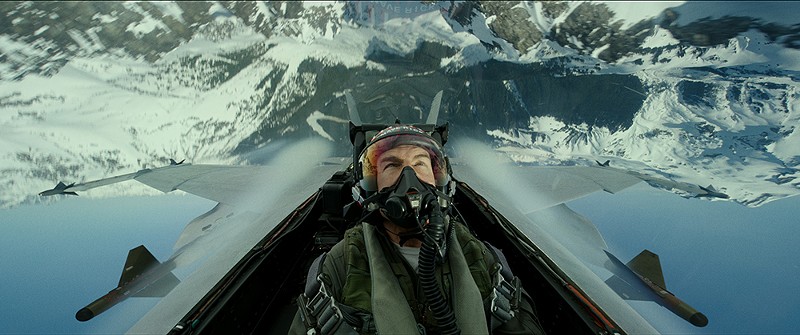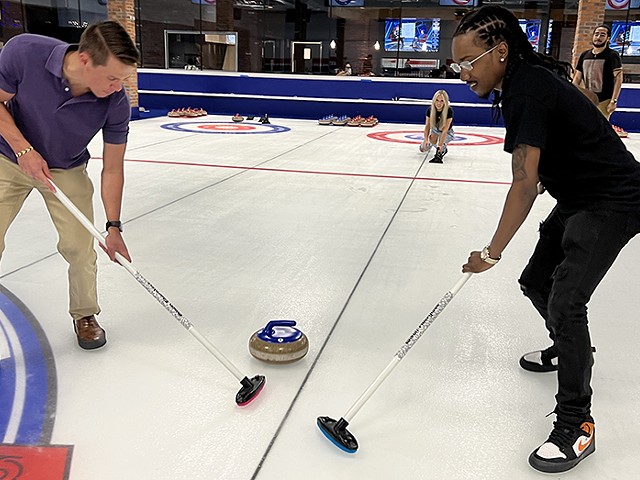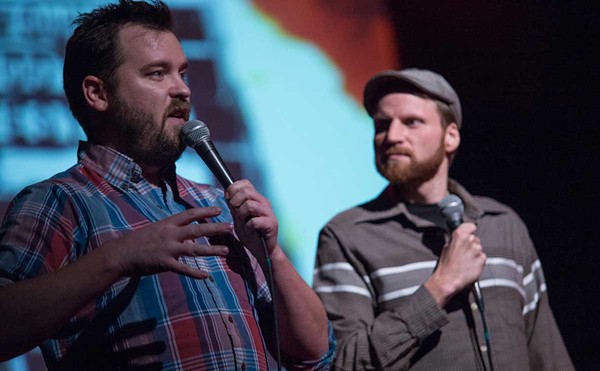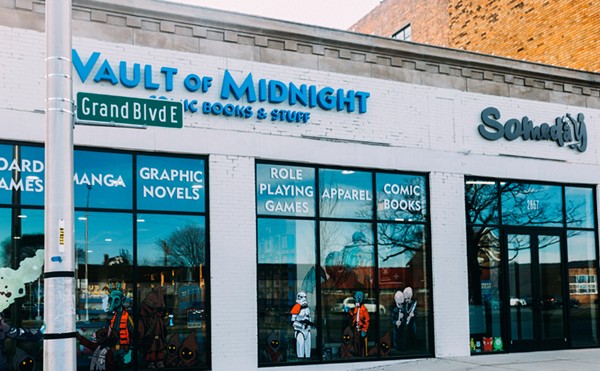
Memory punctuates action throughout Top Gun: Maverick in its many flashbacks — but successful evocation of any feeling richer than nostalgia is a bit tougher of a task. As a remarkably sturdy, fan-saluting sequel, Maverick stands comfortably on its own, extending and repeating much of the action and tensions of the first film with some new wrinkles that make it feel like an episode in the same series helmed by a different, lesser name. While this is an accomplishment in entertainment of a certain kind, its unwillingness to color outside decades-old lines speaks of a certain artistic weakness at its heart. For declining to press viewers or its own style in any richly new directions, the film feels circular and slavish in its devotions to uncreative gestures, highlighting a conservative tendency that keeps it from (if not succeeding) truly setting itself apart.
The first Top Gun could hardly be called non-commercial. Its late director, Tony Scott (also of True Romance and The Last Boy Scout) came to feature films via painting and then production of commercials and music videos, retaining a searing visual sensibility that set even his paycheck projects apart. The director of The Hunger always seemed artistically hungry himself, showcasing even in conservative projects a taste for the unexpected. The cuts he assembled with his editors were marked throughout his career by ever-increasing spontaneity, a kind of time-based impressionism many still grapple with today.
His works as such could feel heatedly subjective, getting at something close to the peaks of first-person, adrenalized experience. Even when working off scripts rooted in familiar tropes — or serving promotional needs for the U.S. Military — his projects carried a distinct voice and sensibility as a consistent signature. As a product of artistic restlessness, the many features of Scott’s work would be hard to push through the more rigorously capitalized, focus-grouped system of production that’s overtaken Hollywood now. Top Gun: Maverick, whatever its many virtues, can only serve to strengthen the case.
In 1986’s Top Gun, Scott’s sensibility ran alongside those of producers Jerry Bruckheimer and Don Simpson, as well as a warm and sweeping cast. Rendering competitive jockeying between pilots in an elite naval flight school as a melodramatic sphere of quasi-athletic striving and accompanying romantic drama, Scott and his collaborators sold flying as a kind of daredevil sport, capturing pale (and largely white) actors flushed and sweat-beaded. This vision, not flattering in the most Hollywood pop-conventional sense, evoked a striking specificity in time, place, and milieu nonetheless. Thanks to Scott’s hand and a robust if under-sketched cast (filled out beyond the page by each actor), even the most rote plot maneuvers could be lifted to a heightened space of textured sensuality. And even as it could pull double-duty as a recruitment ad, Scott’s work asserted film’s capacity as a visual and sonic medium both to transport and to tantalize, as he continued to do after.
Top Gun: Maverick remains in thrall to Scott’s many distinctive gestures, though its structure is in significant part its own. Set at the titular flight school, it sees Cruise as ever-roguish pilot Pete “Maverick” Mitchell sent to train a group of younger pilots at Top Gun for a daunting mission. Requiring extraordinary aerial acrobatics and physical endurance, the film oscillates between training sessions with Cruise as a guru-like instructor and — as in the first installment — Maverick’s interpersonal and romantic entanglements. These spheres overlap most with the addition of “Rooster” (a mustachioed Miles Teller), the long-fatherless son of Goose (Anthony Edwards in the first film), who died tragically on a mission alongside Maverick decades earlier. Navigating both Rooster’s and his own suspicions of himself here proves Maverick’s chief emotional task, providing a sharply pointed reminder of all he owes his new crop of trainees in terms of safety as well as mentorship.
Against considerable odds, these intense teaching and training sessions manage to be both buoyant and absorbing. With Maverick operating as a fairly manic, albeit regimented and at times guru-like instructor, his work catches him between his own penchant for daredevil improvisation and his need to control and account for contingency, considering the youthful lives at stake. “It’s not the plane, it’s the pilot” becomes one of many repeated mantras, highlighting — as in the first film – the very American notion that extraordinary individuals can overcome through discipline and force of will even the plainest of technological and physical laws. A theory put to the test early when Maverick and Rooster’s planes whirl together in a helix formation that takes them below the “hard deck,” or lower limit of where they’re authorized to fly, Maverick’s exercises make space for him to collide with military orthodoxy on the one hand and the needs of his trainees to both accept and mitigate risk on the other. The task works in easy harmony with Cruise’s own persona as both athletic daredevil and control freak, edging a flattering role with shades of real pathology.
These test runs and the eventual, inevitable real mission are choreographed finely enough, with aerial action framed either in wide or cockpit-mounted angles that capture the film’s impressive acrobatics with a highly competent sheen. Differing from the sometimes fractured editing and grainy, shimmering shots of the first film — which conveyed a sense that the work of image-gathering may have often proven a struggle — there’s some energy lost in work made easier by virtue of new technology. In this sense, Maverick’s flight sequences epitomize a thorough contrast; prizing the same honed-and-polished sturdiness, the same principles of clarity and precision that guide the film in flight undergird and constrain its action on the ground.
It’s in those sequences, without acrobatic spectacle as a shield, that Maverick reveals its flaws most plainly. Aping (its collaborators might say “honoring”) countless gestures from the first film — whether the pulsating visual exposition of its opening or Scott’s deep and nuanced affinity for wide figures caught between shadow and fields of solid color in shimmering silhouette — Kosinski and cinematographer Claudio Miranda fail regularly to approximate the feeling and adventurous verve beneath them. With dialogue scenes shot in TV-like, symmetrical compositions, sometimes in front of cartoonishly oversized American flags or just-refracted strings of lights, Maverick feels as though it’s leaning into rather than straining against the limits of its source material. (Scott, by contrast more creatively restless, tended to do the opposite). Accomplished as it seems on watching — especially in the parched landscape of contemporary studio filmmaking — Maverick is largely drained of voice, subversion, or personality in its direction even as it makes space for its many performers (actors and pilots both) to shine through. As with Rooster’s studiously fanboyish aping of his dad, to mimic rather than to deviate is regarded within Maverick as the clearest possible gesture of appreciation — or even of love.
But two things can be true — and in the end, Maverick succeeds more often than it fails, proving absorbing enough for most of its length. What it doesn’t get to be beyond its old and new performers is expressive, experimental, or potent in engineering its drama or its themes. Working mostly through mimicry, subtle variation, and substitution, it can hardly be said that it’s been anything but finely engineered. So as a work of engaging, less than profound surfaces, it works — but it would be better if it allowed for even accidental depth.
Film Details
Stay connected with Detroit Metro Times. Subscribe to our newsletters, and follow us on Google News, Apple News, Twitter, Facebook, Instagram, Reddit, or TikTok.






